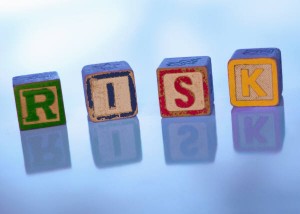This is a test.
This is a test
July 29th, 2015This is a test
July 28th, 2015This is a test.
This is a test
July 27th, 2015This is a test.
This is a test
July 26th, 2015This is a test
This is a test
July 25th, 2015This is a test.
This is a test
July 24th, 2015This is a test.
This is a test
July 23rd, 2015This is a test.
Natural Disasters Displaced Nearly 20 Million People Last Year
July 22nd, 2015Since 2008, an average of 26.5 million people have been displaced each year by disasters, according to the Norwegian Refugee Council (“NRC”). Last year, 19.3 million people were forced from their homes due to floods, storms, earthquakes and other disasters, slightly below the average for recent years, but still alarmingly high. The NRC expects the problem to worsen due to the impacts of climate change, but believes that hazard-resilient building construction could significantly ameliorate the problem. The NRC’s research shows that disaster-related displacement is increasing, in part, because of rapidly growing populations in poorly constructed homes in hazard-prone areas.
Asia accounted for nearly 90 percent of the 19.3 million people displaced by 2014, caused by typhoons in China and the Philippines and floods in India. But the risk of being left homeless by disaster is not limited to less developed countries. The largest single case the NRC cited was found in Japan were some 230,000 people are still in temporary shelters following the Tohoku earthquake and tsunami in 2002, including people displaced from the area around the damaged Fukushima nuclear plan. In the United States, approximately 40,000 people still need housing assistance following Super Storm Sandy in 2012. And certainly the images of New Orleans residents housed in the Super Dome is seared into our national psyche. The findings of the NRC should motivate greater discussion about how policies to support disaster-resilient housing, including retrofitting aging structures.
Thinking the Unthinkable (But Highly Plausible)
July 21st, 2015When we think of earthquake risks, we tend to think of the San Andreas fault in California. Indeed, “San Andreas” the movie, was a big hit at the movie theaters last summer. But a deadlier fault line lies to the north: the Cascadia zone runs approximately 700 miles from northern California to Vancouver. And if risk models have any value, that area is overdue for a severe earthquake.
This week’s edition of The New Yorker presents a terrifying, but altogether realistic scenario, of how an earthquake within the plausible risk scenarios would be the “worst natural disaster in the history of North America. The disaster scenario modeling developed by the U.S. Federal Emergency Management Agency for an earthquake in the Pacific Northwest projects, according to the New Yorker article, that “nearly thirteen thousand people will die in the Cascadia earthquake and {follow-on} tsunami. Another twenty-seven thousand will be injured, and the agency expects that it will need to provide shelter for a million displaced people, and food and water for another two and a half million.” And, unlike Japan, which has effective emergency warning systems in place and robust building codes that take into consideration seismic shocks, the Pacific Northwest is unprepared for such a disaster. It is long past time to start demanding greater public investment in disaster resilience and possibly tax credits for retrofitting buildings for earthquake and flood hazards. We are deluding ourselves if we think we are immune to the scope and scale of comparable disasters that devastated the Asian-Pacific region.
What Is Your Risk Tolerance?
July 20th, 2015Marketing guru Seth Godin posted a blog entry today about the paralyzing consequences of irrational fears, such as shark attacks (which, notwithstanding television news stories, are extremely rare events). He advises that it is “better to prepare for a hazard both likely and avoidable instead”. His comments were in the context of taking on challenges by setting aside irrational fears but, of course, are exactly consistent with the advice given in Prepare for the Worst, Plan for the Best: Disaster Preparedness and Recovery for Small Businesses. It is a mistake to focus your attention on high-severity, low-frequency risks, such as hurricanes and earthquakes as the fear can be paralyzing. Better to prepare for the “everyday disasters”, such as human errors, computer crashes, fires and the like. This approach provides an immediate benefit against a more imminent threat at a more reasonable cost. And it gradually builds resilience against the more severe, but less likely, threats.
Attorney Brett Dawson offered his take on risk tolerance at a legal workshop for small businesses at the SCORE (Service Corps of Retired Executives) “Learn to Soar” program in Rochester, NY earlier this month. I have pages of notes from that workshop to capture his helpful insights from years of advising small business owners. He said that many business owners tend to dismiss risks as “unlikely as being struck by lightning.” But, in fact, 2500 people are struck by lightning each year in the United States and 60 of them die. While being struck by lightning is not likely to happen, it is not a non-zero risk, the point being, if there is a risk, however negligible, that you can eliminate, do so, as there is no benefit to assuming it. Whether your point of reference is a shark attack or a lightning strike, a pragmatic approach to risk tolerance is best.


